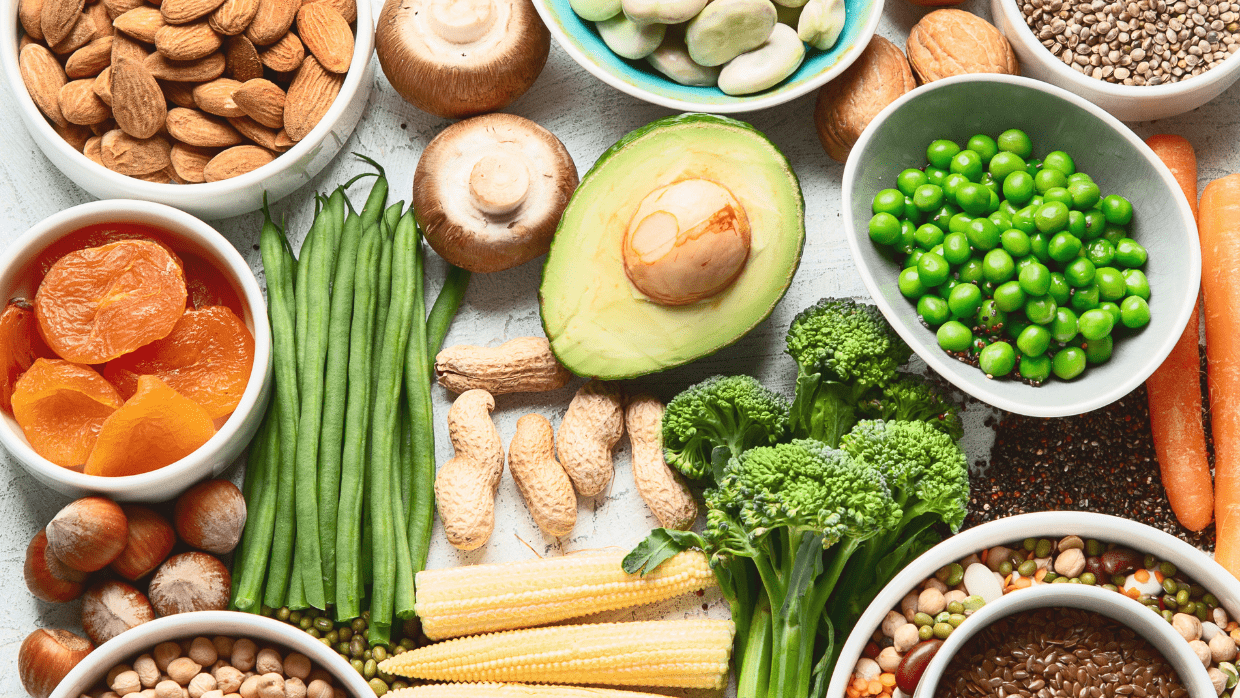Sodexo Dietitians Talk Sustainable Eating and Wellness


Introducing a Sustainable Eating Article Series by Sodexo Dietitians
A collaborative team of Sodexo experts in CSR and dietetics is coming together to launch a new blog series exploring the intersection of sustainability and wellness, highlighting how sustainable eating can be both delicious and inclusive.
Diving Into Plant-Based Eating Terminology
Recently, I met with a student who told me he was a vegetarian and there was nothing to eat in the dining hall for him. He told me there were only plant-based foods, so he could not eat on campus. I was confused to say the least, but I realized very quickly the student was likely perplexed by all the different terminology describing food not made with animal-based ingredients.
The term “animal-based ingredients” is being used intentionally because it is the simplest way to convey a topic that’s been inconsistently covered across the food industry and by other organizations trying to create their own term to refer to non-animal-based products. You may have noticed different but similar-meaning terms — including plant-based, plant-forward, vegan, vegetarian, whole food plant-based, flexitarian, botanical, natural — and the list goes on. It’s no wonder the student could not decide what dish was appropriate for his dietary needs.
The United States Department of Agriculture (USDA) has outlined healthy eating guidelines for Americans, encouraging everyone to eat more fruits, vegetables and whole grains, but this advice is not new. In fact, the USDA has created easy-to-remember phrases such as “5-a-day” and a picture of a balanced plate branded as MyPlate to motivate Americans to increase their intake of fruits and vegetables.
Why is it so daunting to follow these guidelines? I’ve noticed that over time, people have adopted ambiguous terms for food, so to alleviate some of the confusion, I’ll delve into the definitions of emerging food labels related to sustainable eating:
Vegan: This diet eliminates meat, fish, poultry, eggs and dairy products, as well as other animal-derived products such as honey and refined sugar.
Vegetarian: This diet eliminates all whole muscle animal products but does allow dairy, eggs and other animal-derived products such as milk or honey. The following are specific vegetarian diets:
- Lacto-ovo-vegetarian diet: Eliminates meat, fish and poultry but allows eggs and dairy products.
- Lacto-vegetarian diet: Eliminates meat, fish, poultry and eggs but allows dairy products.
- Ovo-vegetarian diet: Eliminates meat, fish, poultry and dairy products but allows eggs.
Pescatarian: This diet eliminates all whole muscle animal products but allows fish and animal-derived products such as cheese, eggs, milk, etc.
Flexitarian: This diet is for people who do not want to eliminate meat altogether. They usually follow the vegetarian diet but will eat meat and fish occasionally.
Plant-Forward or Plant-Based: These diets are remarkably similar to the Flexitarian diet, emphasizing fruits and vegetables, whole grains and legumes. However, plant-based can be used to describe a product and is usually more restrictive in requiring no animal products. The Federal Drug Administration (FDA) has not regulated this term, so consumers need to pay close attention to the food label if the term is being used to describe a product.
Plant-Based: If you dine at a Sodexo café, the term “plant-based” is differentiated as meals that only use ingredients from plants, such as fruits, vegetables, whole grains, legumes and nuts. They may also include honey and sugar.
Regardless of what terminology you choose to use to describe your dietary preferences, the USDA and other nutrition organizations agree that increasing whole fruits and vegetables is beneficial to your health. This list of definitions is just scratching the surface of explaining alternate ways of eating, so some of my colleagues will be featured in future articles to further demystify how to incorporate more fruits, vegetables, beans, pulses, tubers and whole grains into a diet.
Certified sports dietitians, chef dietitians and gerontological dietitians with specific recommendations on sports nutrition, healthy menu swaps and nutrition for brain health will offer their perspectives in future articles.
Hopefully, this article has helped to crack the code on how to navigate plant-based terminology, while also motivating individuals to incorporate more sustainable dining practices.